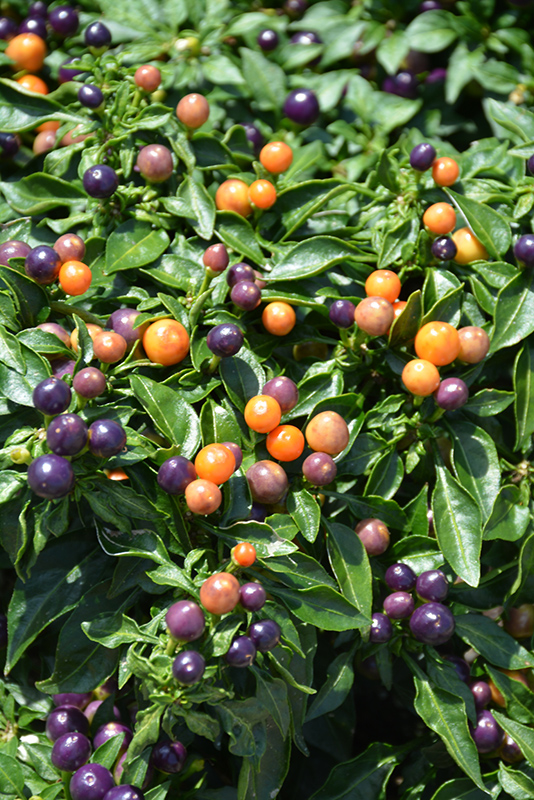6 inches
8 inches

Ornamental Chili, Chili Pepper
Ball
Hot Pops Purple Ornamental Pepper's attractive glossy pointy leaves remain dark green in color throughout the year on a plant with an upright spreading habit of growth. The deep purple round fruit is edible and has a spicy taste and a crisp texture. Note that in general, it can be difficult to get plants to reliably produce fruit indoors; this may be a challenge best reserved for adventurous and experienced gardeners.
This is an herbaceous houseplant with an upright spreading habit of growth. This plant should not require much pruning, except when necessary to keep it looking its best.
When grown indoors, Hot Pops Purple Ornamental Pepper can be expected to grow to be only 6 inches tall at maturity, with a spread of 8 inches. It grows at a medium rate, and under ideal conditions can be expected to live for approximately 1 years. This houseplant requires direct sun for optimal performance, and should therefore be situated in a room that gets bright sunlight for a good part of the day; it is not a good choice for rooms lit only by artificial light. It is very adaptable to both dry and moist soil, but will not tolerate any standing water. The surface of the soil shouldn't be allowed to dry out completely, and so you should expect to water this plant once and possibly even twice each week. Be aware that your particular watering schedule may vary depending on its location in the room, the pot size, plant size and other conditions; if in doubt, ask one of our experts in the store for advice. It is not particular as to soil type or pH; an average potting soil should work just fine.
There are many factors that will affect the ultimate height, spread and overall performance of a plant when grown indoors; among them, the size of the pot it's growing in, the amount of light it receives, watering frequency, the pruning regimen and repotting schedule. Use the information described here as a guideline only; individual performance can and will vary. Please contact the store to speak with one of our experts if you are interested in further details concerning recommendations on pot size, watering, pruning, repotting, etc.
-- THIS IS A HOUSEPLANT AND IS NOT MEANT TO SURVIVE THE WINTER OUTDOORS IN OUR CLIMATE --

